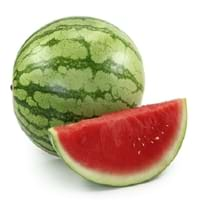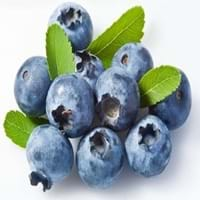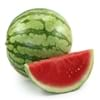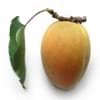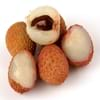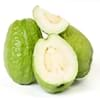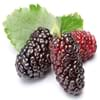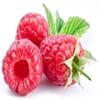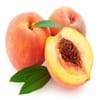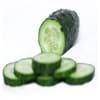Health Benefits
Anti-aging benefits, Anti-inflammatory properties, Asthma treatment, Body hydration, Cancer prevention, Digestive aid, Skin cleansing, Skin rejuvenation
Cancer prevention, Cures gastro-intestinal troubles, Improves night vision, Improves stomach health, Prevents diabetes, Prevents high blood pressure, Reduces blood circulation problems
General Benefits
Anti-inflammatory properties, Body hydration, Controls blood pressure, Digestive aid, Maintains healthy cholesterol level
Fights against infections, Helps in weight loss, Prevents blood clotting in vessels, Treatment of urinary tract infections
Skin Benefits
Anti-aging benefits, Brightens and lightens complexion, Hydrates skin
Anti-aging benefits, Nourishes skin, Protects against skin damage
Hair Benefits
Promotes longer and healthier hair, Regulates hair growth
Prevents hair loss
Allergy Symptoms
Breathing difficulty, Decrease in blood pressure, Dizziness, Eczema, Hives, Runny nose, Swelling of mouth, tongue or lips, Watery eyes
Not Available
Side Effects
Allergic reaction, Bloating, Diarrhoea, Indigestion, Intestinal gas, Nausea, Vomiting
Decrease in blood sugar levels, Diarrhoea, Dizziness, Headache, Internal bleeding, Stomach pain
Best Time to Eat
As a snack in the late afternoon, Don't consume at night and before bed, Eat the fresh ones, avoid mixing with any other foods, don't eat after meal., Strictly avoid empty stomach
As a snack in the late afternoon, Don't consume at night and before bed, Eat the fresh ones, avoid mixing with any other foods, don't eat after meal., Morning time (before lunch)
Vitamin B5 (Pantothenic Acid)
Vitamin C (Ascorbic Acid)
Vitamin K (Phyllochinone)
Phytosterol
Not Available
Calories in Fresh Fruit with Peel
Not Available
Calories in Fresh Fruit without Peel
Not Available
Calories in Frozen Form
Not Available
Not Available
Calories in Dried Form
Not Available
Calories in Canned Form
Not Available
Not Available
Varieties
Sugar Baby, Sangria, Golden Midget, Starlight, Jubilee, Starbrite, Extazy, Stars 'n' Stripes, Mickylee, Yellow Baby, Yellow Doll, Little Baby Flower, Sweet Favorite and Cream of Saskatchewan
Dwarf bilberry, Piper, bog blueberry, Northern bilberry, Mountain bilberry and Oval-leaved bilberry
Color
Canary yellow, Coral red, Orange, Salmon yellow, Scarlet red, White
Dark purple
Inside Color
Red
Light Green
Origin
Southern Africa
Unknown
Soil Type
Sandy, Well-drained
Moist, Well-aerated
Climatic Conditions
Dry, Hot
Cold
Facts about
- Watermelon contain 91% of water.
- In Japan & Chine, watermelon is a popular gift to bring a host.
- Entire watermelon is edible, even the rinds & seeds.
- There are more than 1200 varieties grown in the world.
- Bilberries are used in manufacturing of alcoholic drinks.
- They are used to improve aromas of sorbets.
- The green extract of it's leaves is used in textile industry as natural dye.
Other Countries
Algeria, Brazil, Egypt, Iran, Kazakhstan, Mexico, Spain, Turkey, United States of America
Denmark, Finland, Iceland, Sweden
Top Importer
Germany
United States of America
Botanical Name
Citrullus Lanatus
Vaccinium myrtillus
Synonym
Citrullus vulgaris
blaeberry, whinberry, European blueberry, whortleberry
Subkingdom
Tracheobionta
Tracheobionta
Division
Magnoliophyta
Magnoliophyta
Class
Magnoliopsida
Magnoliopsida
Subclass
Dillenhidae
Dillenhidae
Order
Cucurbitales
Ericales
Family
Cucurbitaceae
Ericaceae
Genus
Citrullus
Vaccinium
Species
C. lanatus
Vaccinium myrtillus
Generic Group
Gourd
Heath
Difference Between Watermelon and Bilberry
We might think that Watermelon and Bilberry are similar with respect to nutritional value and health benefits. But the nutrient content of both fruits is different. Watermelon and Bilberry Facts such as their taste, shape, color, and size are also distinct. The difference between Watermelon and Bilberry is explained here.
The amount of calories in 100 gm of fresh Watermelon and Bilberry with peel is Not Available and 44.00 kcal and the amount of calories without peel is 30.00 kcal and Not Available respectively. Thus, Watermelon and Bilberry belong to Low Calorie Fruits and Low Calorie Fruits category.These fruits might or might not differ with respect to their scientific classification. The order of Watermelon and Bilberry is Cucurbitales and Ericales respectively. Watermelon belongs to Cucurbitaceae family and Bilberry belongs to Ericaceae family. Watermelon belongs to Citrullus genus of C. lanatus species and Bilberry belongs to Vaccinium genus of Vaccinium myrtillus species. Beings plants, both fruits belong to Plantae Kingdom.
